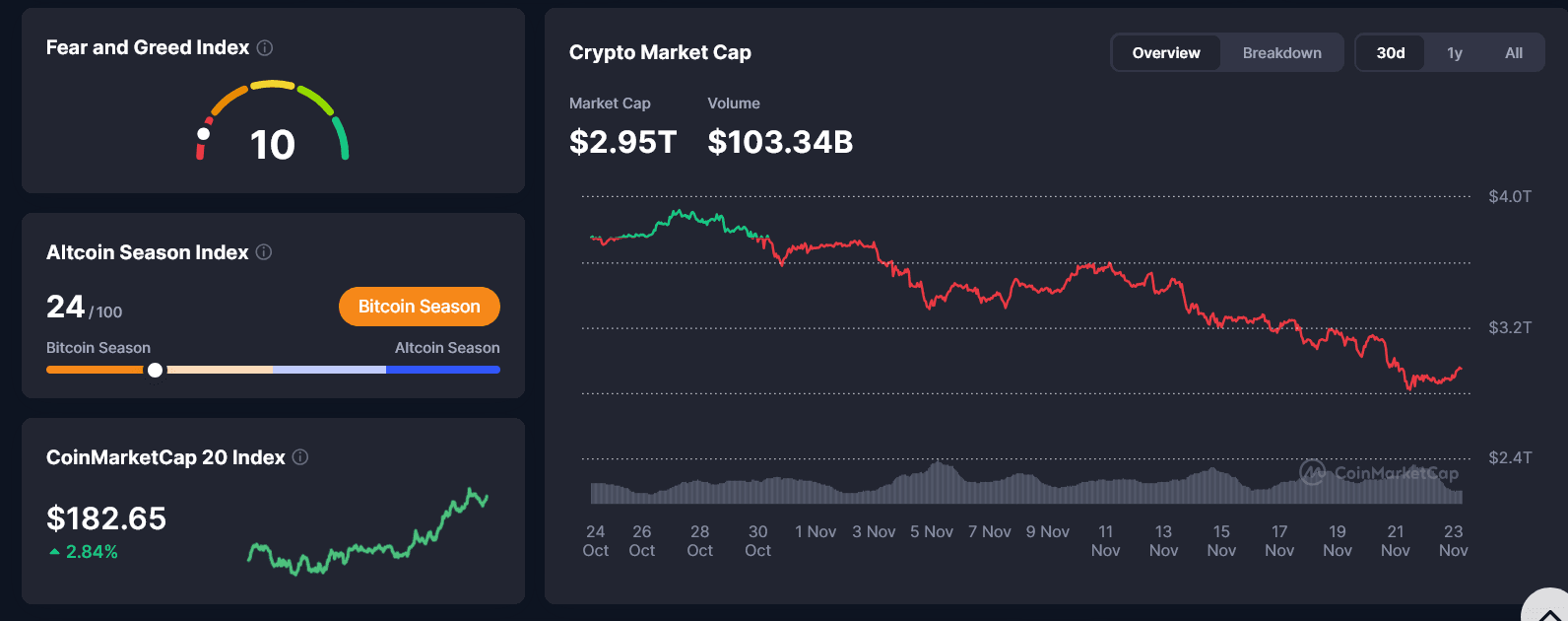Bitcoin News Today: "Institutional Embrace Helps Steady Bitcoin During Market Volatility"
- Bitcoin remains stable amid market volatility, with analyst Lyn Alden dismissing crash fears due to institutional adoption and macroeconomic factors. - Stablecoin reserves hit $72B, while Circle's USDC outpaces Tether and Solana secures $1B in institutional funding, signaling growing regulated crypto confidence. - Alden predicts $100K Bitcoin by 2026, attributing stability to extended cycles driven by macro demand rather than traditional halving patterns. - Diverging analyst views highlight risks, but Al
Bitcoin has managed to maintain its stability despite recent market volatility, with macroeconomic expert Lyn Alden downplaying concerns of a significant downturn. Although the cryptocurrency experienced notable fluctuations, dropping to $86,000 in late November, experts believe that the overall macroeconomic backdrop and increasing institutional involvement are helping to reduce the likelihood of a major sell-off
The latest decline happened alongside conflicting messages from the

Institutional participation is also transforming the crypto sector. Circle’s
Lyn Alden, a well-known macro analyst in the crypto space, believes that Bitcoin’s current market does not exhibit the “euphoric” atmosphere that usually signals a major correction. She attributes this to the diminishing impact of the traditional four-year cycle, which she says is now being shaped by institutional demand and broader economic factors. “The cycle may last longer than anticipated because it’s influenced by macro trends and asset interest, not just the halving,” Alden explained in a recent interview. She anticipates Bitcoin will reach $100,000 again by 2026, with the possibility of new record highs in either 2026 or 2027
Yet, some analysts remain cautious. Vineet Budki from Sigma Capital forecasts a 65–70% correction for Bitcoin over the next couple of years. Alden, however, warns that market results rarely align with extreme predictions. “Outcomes are seldom as positive or as negative as most expect,” she remarked, stressing that investors should not assume a guaranteed bull run
Several factors are contributing to Bitcoin’s sideways movement, including restricted liquidity, increased interest in AI-related assets, and gold’s strong performance drawing capital away from crypto.
The market is currently in a holding pattern, with institutional actions and regulatory developments likely to be key in determining Bitcoin’s next direction.
Disclaimer: The content of this article solely reflects the author's opinion and does not represent the platform in any capacity. This article is not intended to serve as a reference for making investment decisions.
You may also like
The Rapid Rise of ZK (Zero-Knowledge) Assets and Protocols: How Network Enhancements and Institutional Embrace Impact Investments
- ZK protocols saw 2025 seismic growth via network upgrades and institutional adoption, reshaping investment theses for scalable, private blockchain infrastructure. - ZKsync's Atlas Upgrade achieved 43,000 TPS with $0.0001/tx costs, while Polygon and StarkNet secured $1B+ in adoption through EVM compatibility and 90% gas fee reductions. - Deutsche Bank , Walmart , and HSBC adopted ZKP for cross-chain settlements, supply chain transparency, and compliance, accelerating enterprise-grade use cases. - ZKP mark
Bitcoin News Update: Institutions Choose Bitcoin as Protection Against Inflation, Not as a Payment Method
- BlackRock highlights rising institutional demand for Bitcoin as a "digital gold" hedge against inflation, not a payment tool. - Abu Dhabi's ADIC tripled its $517.6M stake in BlackRock's IBIT ETF, reflecting confidence in Bitcoin's long-term value preservation. - BlackRock develops a staked Ethereum ETF but faces regulatory hurdles, while crypto treasury firms like FG Nexus struggle with asset valuation pressures. - Institutional adoption accelerates globally, with Latin America expanding crypto infrastru
What's Next For the Crypto Market?

Bitcoin News Today: Bitcoin as Digital Gold, Ethereum as the Engine of Decentralized Finance: How Cryptocurrencies Are Carving Out Distinct Functions
- BlackRock executives highlight Bitcoin's shift toward "digital gold" as a long-term store of value, supported by institutional demand and fixed-supply models like Bitcoin Munari. - Ethereum's faster transaction velocity (3x BTC) reinforces its "digital oil" role, contrasting with Bitcoin's stable, passive accumulation strategy and macro-hedge appeal. - Regulatory clarity on stablecoins and blockchain transparency could deepen Bitcoin's institutional adoption while highlighting risks in altcoins like Aero
